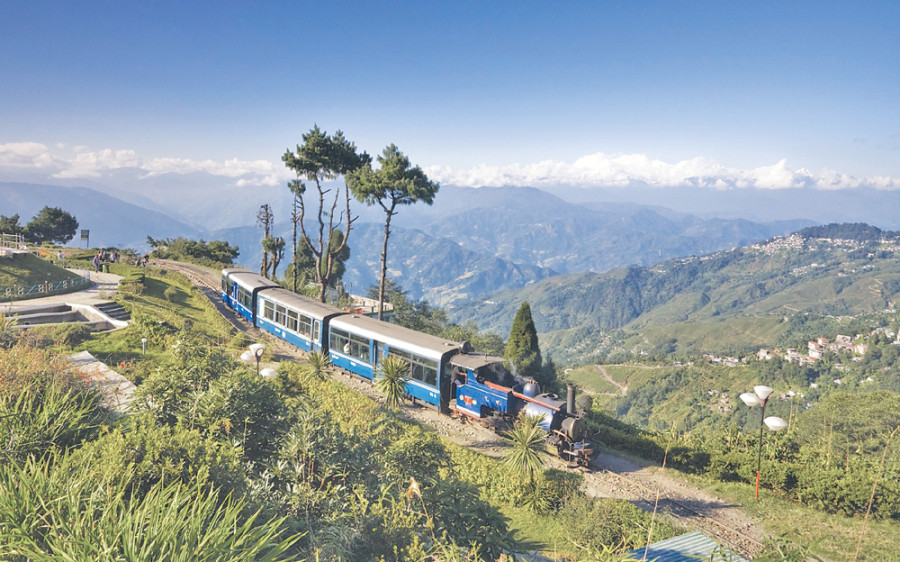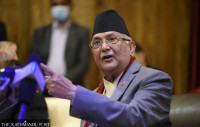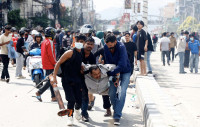Opinion
Intellectual heritage
The emergence of hill stations in India has some interesting stories behind it
Mahendra P Lama
There are scores of fascinating literature on the history of Indian hill stations. They are an intellectual feast. There are four parallel, organised and yet distinct processes of how hill towns evolved as a centre of politico-cultural events and strategic-economic dynamics mostly in India during the 19th century.
Four processes
First, many of the hill towns in India were developed for geo-political and strategic reasons. War has a definite link to the emergence of these towns because they were mostly developed as cantonment and sanatoria. The present day Cherrapunji came into the picture only after First Anglo-Burmese war (1824-26); it provided a dominating position for the East India Company. David Scott, the Agent to the Governor General in the north east frontier, chose to station European troops there in 1829. However, within the next two decades, Shillong was found to be more suitable and by 1864 it was made the district headquarters.
The Anglo-Gorkha War created a similar cantonment in Dehradun and the Anglo-Bhutan war (1864-65) in and around Darjeeling. Cantonment brought in civilians, tourists, pilgrims, markets, traders and local settlements. Municipal Acts were brought into operations. For the first time, a particular class of traders and merchants like Marwaris emerged in the hill towns. And thus, trade and commerce started becoming major activities in the towns.
Second, trading across the border was an important factor behind the development of hill towns. It was the Indo-Tibetan trade that partly inspired the British to annex Kumaon and Garhwal. In Ladakh, right since the rule of Namgyal Rajas starting from 1532 till it lost its independence in 1834 at the hands of Wazir Zotawra Singh of Jammu, trade with Tibet and some Central Asian countries remained a core theme. The Younghusband Mission of 1903 was again primarily meant to reinforce the cause of Sikkim-Tibet trade via the Nathu la pass.
Third, these hill towns served as major producing grounds of very specific crops like tea and cinchona. In order to run these various economic systems, electricity was needed. This is how the traditional Ghatta or gharat system was reemphasised both as sources of energy and revenue. Against this backdrop, the Sidrapong power house known as Asia’s first hydel power plant was built in 1897 in Darjeeling.
Finally, since most of the hill towns are located in the region with a rich bio-diversity, they attracted both researchers and corporations. They soon became a cradle of scientific knowledge and an incessant source of commercial ventures.
Education and tourism
Many of the hill towns got significant economic and socio-cultural boosting during their establishment. What was striking was the use of education and tourism by the British India government to advance their consolidation. The zeal and dedication with which missionaries came to the Eastern Himalayan towns from Scotland to Canada possibly has no parallel. A majority of them breathed their last while spreading modern education in the hills.
They set up St Joseph’s, Turnbull and St Pauls in Darjeeling, St Edmund’s in Shillong, and Anglo-Vernacular Middle School in Tehri- Garhwal. By the end of the 19th century, there were 95 schools run by the missionaries in the Eastern Himalayan region—Darjeeling, Kalimpong, Kurseong, the Duars and Sikkim.
Along with that, the students arrived, a new culture flourished and food habits changed. As the message of enchanting beauty, salubrious climate and quality education spread, more and more parents started sending their children to these schools. Students came from Bhutan, Nepal, South East Asian nations and even from far-off countries like Canada and the United States. Tourists from across the world came, too. This is how these hill towns became tourist hubs without any modern means of advertisement. Tourism in turn promoted development of basic infrastructures and put in place more effective governance. Hill stations thus became more and more cosmopolitan and outward looking. Darjeeling, the Queen of Hills, became a brand.
Hill towns were also used for political agreements like the Tripartite Convention among Great Britain, China and Tibet held in Shimla in 1913. It was held under the presidency of Sir Henry McMahon, the man behind the controversial McMahon line in the Sino-India border dispute. They built exclusive roads for very specific purposes and established several communication systems. The Stilwell road, which connects Assam with Kunming in China through Myanmar, was built exclusively for military purposes during the Second World War.
The Hill Cart Road in 1869 and the construction of the Himalayan Railway in 1881 in Darjeeling by Gilanders Arbuthnot and Company under the stewardship of Franklin Prestage were mainly used for transporting tea, timber and quinine to major ports. They built Nathu la and Jelep la road in Sikkim and Hindustan-Tibet road in present day Himachal Pradesh for trade exchange with Tibet and China and further to Mongolia and Russia. They identified the passes frequented by the traders and pilgrims across the Himalayan regions. This is how the passes like Shipki la in Kinnaur, Himachal Pradesh, Mana Pass and Niti Pass in Garhwal, Kungri Bingri, Dana and Lipu Lekh Pass in Kumaon came into prominence. Hill towns soon served as supply bases.
Food and drink
In our childhood, whenever we were unwell, our great grandmother prepared a special dish called “fis-fash” with great interest. It was rice quickly boiled with chicken, ginger and onions. She asked us to eat this for quick recovery. Later, our grandparents and our parents inherited this “fis-fash” culture. Once I was in Chittagong Hill Tracts and found some people talking about “fis-fash”. Amazing! I told them we also eat the same in Darjeeling. An old man sitting next to us intervened to say it was actually “feast-fast”, a dish prepared as a quick meal mainly by the British soldiers. This is how an inherited food culture had become a part of our own indigenous hill culture.
The popular Tongba came to be commercialised for various reasons. One major reason was an array of mouth-watering literature written by travellers like Waddel, Pemberton, Freshfield, and even Rahul Sankrityana. Waddel wrote in the context of Sikkim “after our three hours’ walk we were not sorry to find on entering the house, that Achoom, who had preceded us with the commissariat, had ready waiting for us a hot lunch, to which we did full justice. For drink we had a large bamboo jugful of the refreshing beer, that the Lepchas brew from a millet seed called Murwa. The fermented grain is put into a jug formed by cutting off a joint of the giant bamboo and this jug is then filled up with hot water. The liquor is imbibed by sipping it up through a thin reed like straw. It tastes like weak whiskey-toddy or rum-punch with a pleasant acidity, and it is milder than the mildest English beer. It is the wine of the country and is a food as much as a drink. The men, women, and children delight to sip it at all times from morning till night...Indeed one of the commonest sights is to see a monk going his round sipping a jug of this beer as a solace to his pessimistic dogma that ‘all life is misery,’ for he then is able to contemplate the world with full approval.”
Lama, former member of National Security Advisory Board, Government of India, is a professor of South Asian Economies at Jawaharlal Nehru University, New Delhi and a member of the Eminent Persons Group (EPG) from India




 11.12°C Kathmandu
11.12°C Kathmandu










